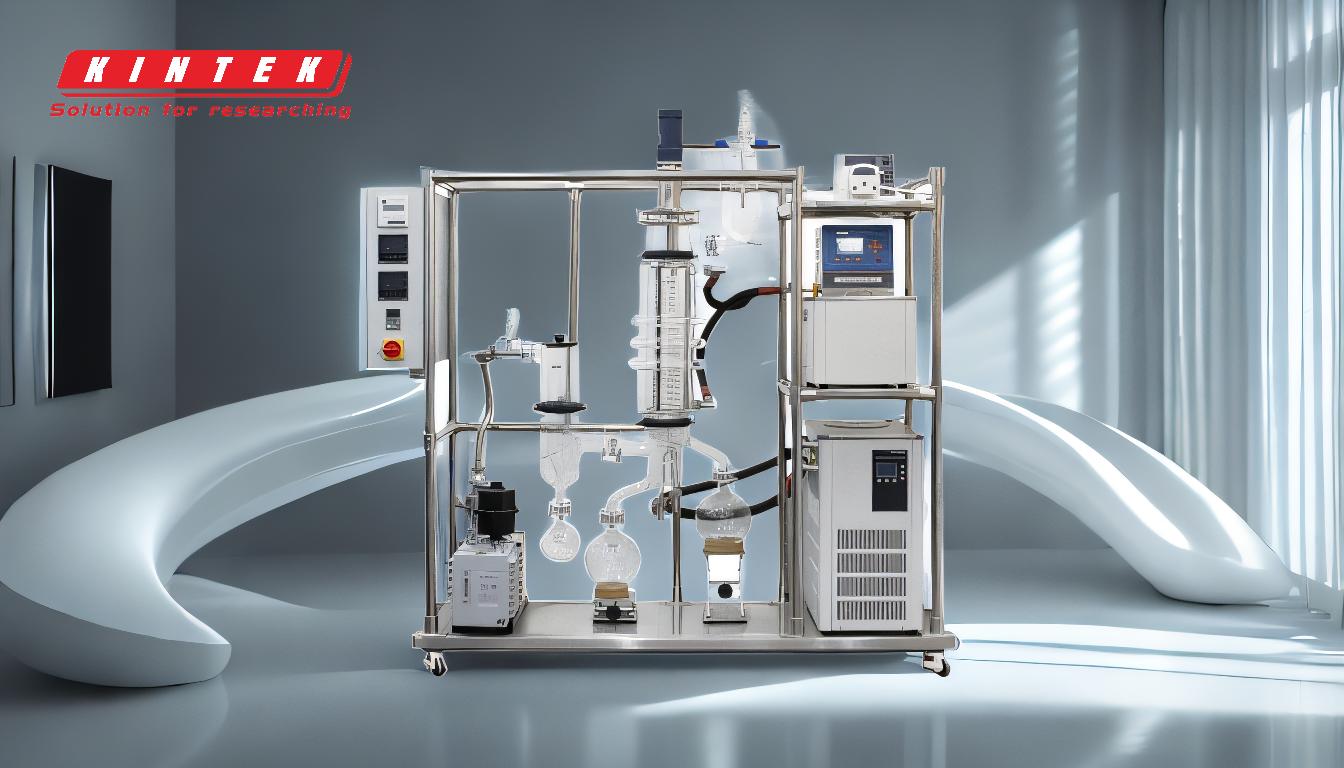Molecular distillation operates under high vacuum conditions, typically requiring a very low partial pressure of residual gas to ensure that the mean free path of molecules is significantly longer than the distance between the evaporation and condensation surfaces. This process is highly dependent on maintaining a high vacuum, often in the range of 0.001 to 0.1 mbar, to achieve effective separation of components based on their differing evaporation rates. The distance between the heating and condensation surfaces is usually less than 100mm, ensuring that the mean free path of vapor molecules is comparable to this distance. These conditions are critical for the successful operation of molecular distillation, which is typically carried out in specialized equipment like short-path distillers or centrifugal distillers.
Key Points Explained:

-
High Vacuum Conditions:
- Molecular distillation requires a very high vacuum, typically in the range of 0.001 to 0.1 mbar. This low pressure ensures that the mean free path of the residual gas molecules is significantly longer than the distance between the evaporation and condensation surfaces. The high vacuum minimizes the presence of residual gas molecules that could interfere with the distillation process.
-
Mean Free Path of Molecules:
- The mean free path is the average distance a molecule travels before colliding with another molecule. In molecular distillation, the mean free path of the vapor molecules must be on the same order of magnitude as the distance between the evaporation and condensation surfaces, which is typically less than 100mm. This ensures that the molecules can travel directly from the evaporation surface to the condensation surface without being obstructed by other molecules.
-
Distance Between Surfaces:
- The distance between the evaporation surface and the condensation surface is crucial. It must be less than the mean free path of the vapor molecules, usually under 100mm. This short distance allows the vapor molecules to travel directly to the condenser without being scattered by residual gas molecules, ensuring efficient separation of the components.
-
Partial Pressure of Residual Gas:
- The partial pressure of the residual gas must be very low to ensure that the mean free path of the residual gas molecules is a multiple of the distance between the evaporation and condensation surfaces. This low partial pressure is achieved through the high vacuum conditions, which are essential for the effective operation of molecular distillation.
-
Specialized Equipment:
- Molecular distillation is carried out in specialized equipment such as short-path distillers or centrifugal distillers. These devices are designed to maintain the necessary high vacuum and precise temperature and pressure settings required for the process. The short-path distillers, in particular, are designed to minimize the distance between the evaporation and condensation surfaces, ensuring that the mean free path of the molecules is sufficient for effective distillation.
-
Separation Mechanism:
- The separation in molecular distillation is based on the difference in the evaporation rates of the components in the liquid mixture. Under high vacuum and with the appropriate distance between surfaces, the lighter components evaporate more readily and travel directly to the condenser, where they are collected. This allows for the separation of components with very similar boiling points, which would be difficult to separate using conventional distillation methods.
In summary, the pressure in molecular distillation is characterized by a high vacuum, typically between 0.001 to 0.1 mbar, which is essential for maintaining the necessary mean free path of the molecules. The process also requires a very short distance between the evaporation and condensation surfaces, usually less than 100mm, to ensure that the molecules can travel directly to the condenser without interference. These conditions are maintained in specialized equipment designed for molecular distillation, allowing for the effective separation of components based on their differing evaporation rates.
Summary Table:
| Key Factor | Details |
|---|---|
| Vacuum Pressure | 0.001–0.1 mbar |
| Mean Free Path | Comparable to distance between surfaces (<100mm) |
| Distance Between Surfaces | Less than 100mm to ensure direct molecule travel |
| Specialized Equipment | Short-path or centrifugal distillers |
| Separation Mechanism | Based on differing evaporation rates under high vacuum |
Discover how molecular distillation can optimize your separation processes—contact us today for expert advice!










